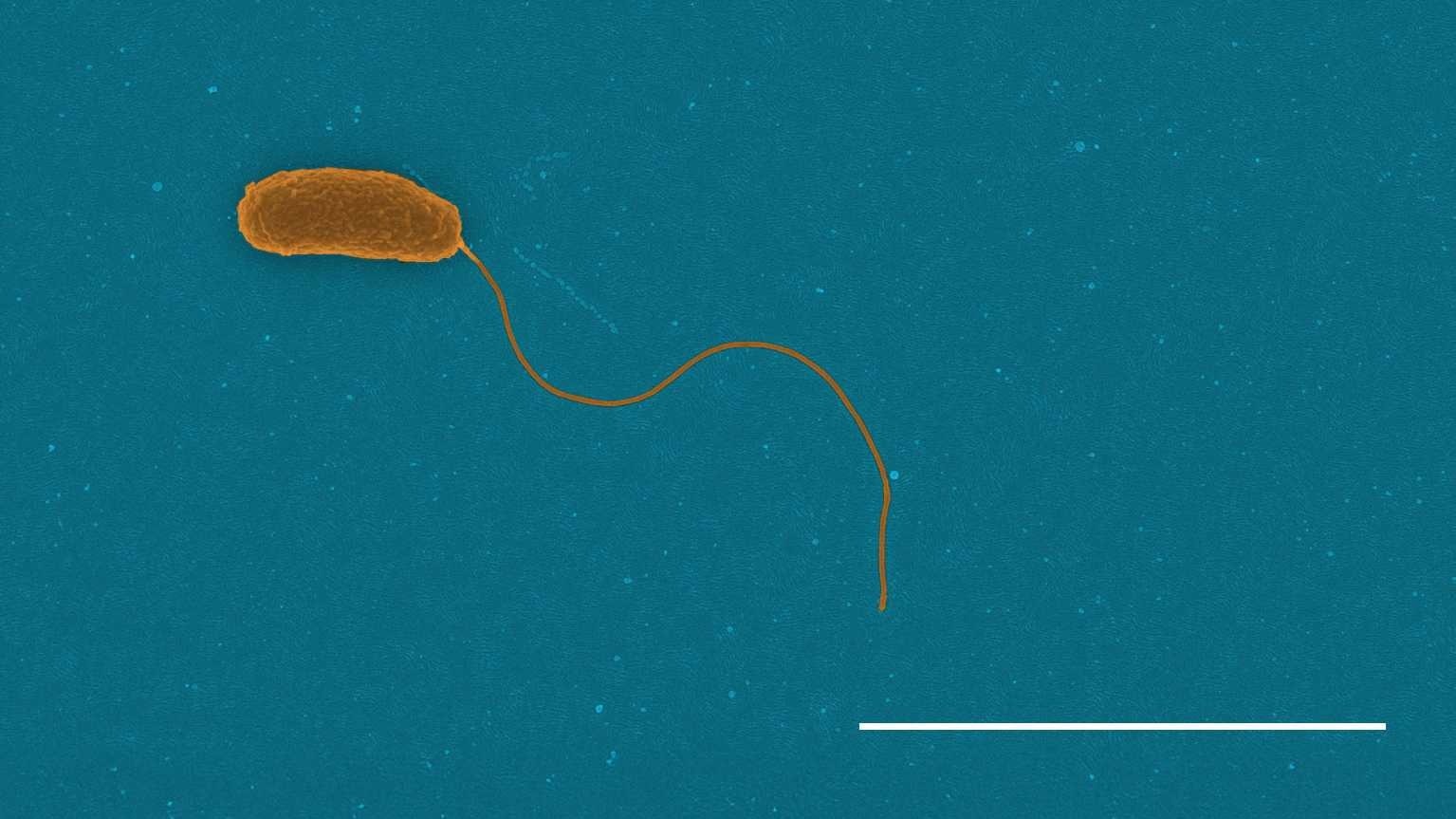Reviewed by Lauren HardakerMay 27 2025
Marine bacteria control the amount of CO2 stored in the oceans by swimming after and destroying sinking particles that might otherwise linger in the ocean for millennia.
 Marine bacterium Vibrio coralliilyticus with a flagellum during starvation, captured with a scanning electron microscope. Scale bar: 3 µm, about 30 times thinner than a human hair. Image Credit: Sophie Zweifel and Pallavi Keshri, ETH Zürich
Marine bacterium Vibrio coralliilyticus with a flagellum during starvation, captured with a scanning electron microscope. Scale bar: 3 µm, about 30 times thinner than a human hair. Image Credit: Sophie Zweifel and Pallavi Keshri, ETH Zürich
Researchers observed that some bacteria may swim for several days without food while looking for these particles, dropping body weight in the process.
Understanding how marine bacteria achieve this may allow for more accurate predictions of marine carbon storage capacity and climate mitigation.
The decision to swim or not to swim when there is no food turns out to be a general problem for bacteria. When starving, swimming increases your chances of getting to an area where life is better. At the same time, swimming is very costly for marine bacteria. It's really a high-risk, high-reward decision for them.
Roman Stocker, Professor, Institute for Environmental Engineering, ETH Zürich
An interdisciplinary team of researchers from ETH Zurich, EAWAG, and the University of Vienna addressed this issue by conducting experiments on a variety of species, starving the bacteria and then examining their swimming behaviour under a microscope.
They discovered that bacteria either ceased swimming completely after a few hours of starvation or continued swimming for at least two days (some even a week).
Bacteria are Like Marathon Runners
It has puzzled us for some time how the bacteria that keep swimming without food pay the energetic price.
Dr. Johannes Keegstra, Study Lead Author and Staff of Professorship, ETH Zurich
It was discovered by weighing them using sophisticated methods that each day they swim, they lose around 10 % of their biomass.
“They are very much like marathon runners, converting biomass reserves into energy to keep swimming.”
This demonstrates that marine bacteria use two distinct approaches to the challenge of swimming: risk-averse bacteria completely stop swimming and simply wait for things to improve, saving their resources, whereas risk-prone bacteria sacrifice some of their biomass in the hope of regaining it later when they swim into a particle.
From Behavior to Climate
The authors predicted this behavior in other bacteria using the information found in the bacterial species’ DNA sequences. For instance, they predicted which technique is more prevalent in which oceanic region based on sequence data from field samples. This could help with carbon storage modeling.
In mathematical models that depict how different types of carbon, including CO2, are transformed in the ocean, bacteria are frequently ignored.
If we want these models to be predictive, we need to describe their behavior more explicitly.
Martin Ackermann, Professor, ETH Zurich
Keegstra added, “The problem is that every species is different, so where do you start? With such simplifying principles, we are currently working to see how we can improve predictions of carbon fluxes.”
Source:
Journal reference:
Keegstra, J. M., et al. (2025) Risk–reward trade-off during carbon starvation generates dichotomy in motility endurance among marine bacteria. Nature Microbiology. doi.org/10.1038/s41564-025-01997-7.